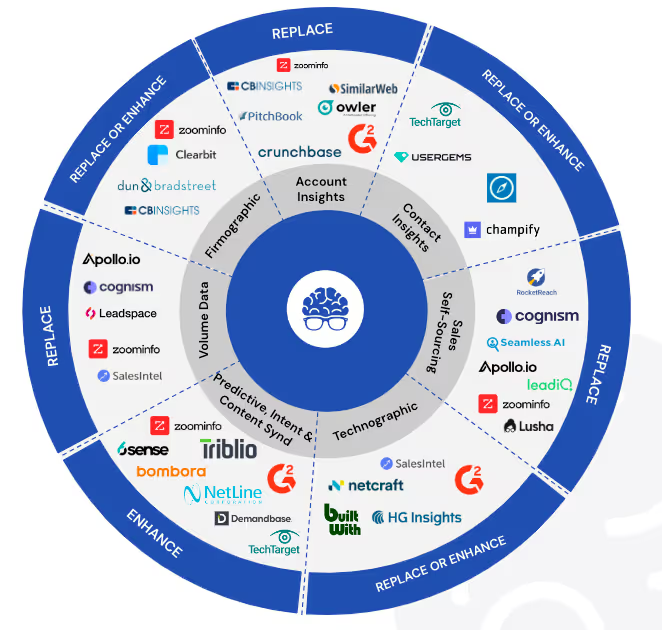The Convergence of Marketing and Sales: Consolidating the Tech Stack for Enhanced Efficiency and Impact
In the rapidly evolving landscape of digital business, the lines between marketing and sales are increasingly blurring. Organizations are recognizing the immense benefits of a unified approach, leading to a significant shift towards the consolidation of marketing and sales technology stacks. This strategic move is not just about cost savings; it's about enhancing efficiency, improving data coherence, and ultimately, driving a more impactful customer journey. This comprehensive exploration delves into why and how businesses are integrating their tech stacks, the challenges faced, and the best practices for a successful consolidation.
The Drive Towards Consolidation
1. Enhanced Collaboration and Efficiency: The traditional silos between marketing and sales often lead to disjointed customer experiences and inefficiencies. Consolidated tech stacks foster seamless collaboration, ensuring that both teams operate with a shared understanding of customer interactions, leading to more cohesive strategies and execution.
2. Unified Data for Deeper Insights: A consolidated tech stack merges data sources, providing a 360-degree view of the customer journey. This unified data pool is instrumental in generating deeper insights, enabling personalized marketing strategies, and more targeted sales approaches.
3. Streamlined Processes and Cost Optimization: Integrating tech stacks eliminates redundancies, streamlines processes, and reduces software overlap. This not only leads to cost optimization but also simplifies training and onboarding, making it easier for teams to adopt and utilize new tools effectively.
The Path to Consolidation: Strategies and Challenges
Strategies for Effective Tech Stack Consolidation:
- Audit and Evaluation: Begin with a comprehensive audit of existing tools across marketing and sales. Assess functionalities, usage, and impact on ROI to identify overlaps and gaps.
- Define Objectives and Requirements: Clearly define the objectives of consolidation, including the desired outcomes for marketing and sales alignment, efficiency gains, and customer experience improvements.
- Select Integrative Platforms: Opt for platforms that offer wide-ranging functionalities and integrations, reducing the need for disparate tools. CRM systems with marketing automation, sales engagement, and analytics capabilities are often at the core of a consolidated tech stack.
- Emphasize Data Integration: Ensure that chosen solutions can seamlessly share and sync data, maintaining data integrity and accessibility across departments.
- Stakeholder Buy-In and Training: Secure buy-in from all stakeholders by highlighting the benefits of consolidation. Invest in comprehensive training to ensure smooth adoption and utilization.
Challenges in Tech Stack Consolidation:
- Resistance to Change: Changing established workflows and tools can meet resistance. Addressing concerns through transparent communication and demonstrating value is crucial.
- Data Migration Risks: Consolidating data from multiple platforms into a unified system poses risks of data loss or corruption. A meticulous, phased approach to data migration is essential.
- Integration Complexities: Ensuring seamless integration between different technologies can be challenging. Leveraging APIs and choosing platforms known for their integrability can mitigate these issues.
Best Practices for a Unified Tech Stack
1. Focus on Customer Experience: Choose tools and platforms that enhance the customer journey at every touchpoint, from initial awareness through post-sale engagement.
2. Invest in Scalability: Opt for solutions that can grow with your business, accommodating new channels, customer segments, and functionalities as needed.
3. Prioritize Flexibility and Open Architecture: Solutions that offer open APIs and extensive integration ecosystems allow for greater flexibility and the ability to adapt to emerging technologies.
4. Data Security and Compliance: In an era of increasing data privacy regulations, ensuring that your consolidated tech stack complies with laws like GDPR and CCPA is paramount.
5. Continuous Evaluation and Optimization: Technology and customer behaviors are constantly evolving. Regularly reassess your tech stack to ensure it remains aligned with your business objectives and market dynamics.
Conclusion
The consolidation of marketing and sales tech stacks represents a strategic shift towards greater efficiency, deeper insights, and a more unified approach to the customer journey. While the path to consolidation involves careful planning, stakeholder engagement, and overcoming technical challenges, the benefits of a streamlined, integrated technology ecosystem are clear. By fostering collaboration, enhancing data coherence, and optimizing processes, businesses can not only achieve cost savings but also drive greater impact in their marketing and sales efforts. In navigating this journey, the focus should always remain on the ultimate goal: delivering exceptional customer experiences that drive loyalty and growth.




